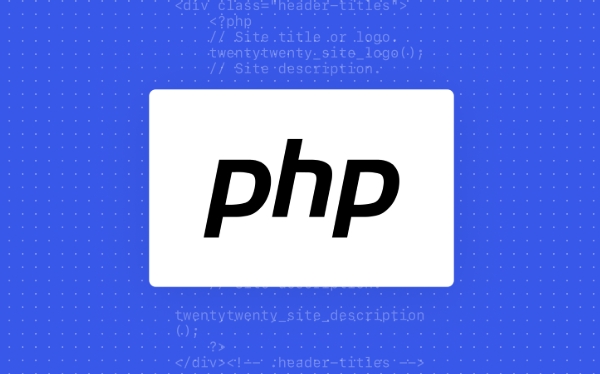Implementing case-insensitive search for regular expressions in PHP is mainly done by using the "i" modifier. 1. Adding the "i" modifier to the regular expression, such as /hello/i, can match any form of upper and lower case strings; 2. PHP's functions such as preg_match, preg_match_all, and preg_replace all support this modifier to ensure that the keywords can be recognized no matter what form they appear; 3. In actual applications, for example, when keyword highlighting or filtering, you need to combine preg_quote to prevent special characters from errors, and use $0 to match content; 4. When processing non-English characters, you should ensure that the string is UTF-8 encoding, and add the "u" modifier after the regular expression to correctly identify Unicode characters, such as /café/iu. Mastering these key points can effectively deal with most case-insensitive regular expression requirements.

It is actually quite common to do case-insensitive search for regular expressions in PHP. For example, if you want to match a keyword, whether it is uppercase, lowercase or mixed, then you can easily do it by adding the "i" modifier.

Use the i modifier to achieve case-insensitive
PHP regular functions (such as preg_match , preg_match_all , and preg_replace ) all support modifiers, where i is used to enable case-insensitive mode.

For example:
$pattern = '/hello/i';
$text = 'Hello World';
if (preg_match($pattern, $text)) {
echo 'Matching successfully';
} In this code, although $text is "Hello" (capitalizes the initial letter), it can still match hello because /i is used. Regardless of whether the target string is HELLO , hELLo or other forms, it can be recognized.

Note: Modifiers should be added after the slash at the end of the regular expression and cannot be missed.
Common scenarios: keyword highlighting or filtering
Sometimes we need to look for certain keywords in a paragraph of text and do not care about upper and lower case, such as search highlighting or blocking word filtering.
A simple highlighting example:
$keyword = 'apple'; $text = 'I ate an Apple today. Apples are delicious.'; $pattern = '/' . preg_quote($keyword, '/') . '/i'; $result = preg_replace($pattern, '<strong>$0</strong>', $text); echo $result;
The output result will be:
I ate an <strong>Apple</strong> today. <strong>Apples</strong> are delicious.
Here are a few key points:
- Use
preg_quoteto avoid errors in keywords with special characters - Mode plus
iimplementation is case-insensitive -
$0means the matching content itself
Pay attention to coding issues when supporting multilingual
If you are dealing with non-English content, such as Chinese or accented Latin characters, remember to make sure the string is UTF-8 encoded and add the u modifier to the regular expression:
$pattern = '/café/iu';
This not only does not distinguish between case and lower- and lower- and lower- and lower- and lower- and lower- and lower- and lower- and lower- and lower- and lower- and lower- and lower- and lower- and lower- and lower- and lower- and lower- and lower- and lower- and lower- and lower- and lower- and lower- and lower- and lower- and lower- and lower- and lower- and lower- and lower- and lower- and lower- and lower- and lower- and lower- and lower- and lower- and lower- and lower
Basically that's it. By mastering the combination of the i modifier and the basic preg_* function, you can deal with most case-insensitive regular needs.
The above is the detailed content of php regex case insensitive search. For more information, please follow other related articles on the PHP Chinese website!

Hot AI Tools

Undress AI Tool
Undress images for free

Undresser.AI Undress
AI-powered app for creating realistic nude photos

AI Clothes Remover
Online AI tool for removing clothes from photos.

Clothoff.io
AI clothes remover

Video Face Swap
Swap faces in any video effortlessly with our completely free AI face swap tool!

Hot Article

Hot Tools

Notepad++7.3.1
Easy-to-use and free code editor

SublimeText3 Chinese version
Chinese version, very easy to use

Zend Studio 13.0.1
Powerful PHP integrated development environment

Dreamweaver CS6
Visual web development tools

SublimeText3 Mac version
God-level code editing software (SublimeText3)

Hot Topics
 What are some best practices for versioning a PHP-based API?
Jun 14, 2025 am 12:27 AM
What are some best practices for versioning a PHP-based API?
Jun 14, 2025 am 12:27 AM
ToversionaPHP-basedAPIeffectively,useURL-basedversioningforclarityandeaseofrouting,separateversionedcodetoavoidconflicts,deprecateoldversionswithclearcommunication,andconsidercustomheadersonlywhennecessary.StartbyplacingtheversionintheURL(e.g.,/api/v
 How do I implement authentication and authorization in PHP?
Jun 20, 2025 am 01:03 AM
How do I implement authentication and authorization in PHP?
Jun 20, 2025 am 01:03 AM
TosecurelyhandleauthenticationandauthorizationinPHP,followthesesteps:1.Alwayshashpasswordswithpassword_hash()andverifyusingpassword_verify(),usepreparedstatementstopreventSQLinjection,andstoreuserdatain$_SESSIONafterlogin.2.Implementrole-basedaccessc
 What are the differences between procedural and object-oriented programming paradigms in PHP?
Jun 14, 2025 am 12:25 AM
What are the differences between procedural and object-oriented programming paradigms in PHP?
Jun 14, 2025 am 12:25 AM
Proceduralandobject-orientedprogramming(OOP)inPHPdiffersignificantlyinstructure,reusability,anddatahandling.1.Proceduralprogrammingusesfunctionsorganizedsequentially,suitableforsmallscripts.2.OOPorganizescodeintoclassesandobjects,modelingreal-worlden
 What are weak references (WeakMap) in PHP, and when might they be useful?
Jun 14, 2025 am 12:25 AM
What are weak references (WeakMap) in PHP, and when might they be useful?
Jun 14, 2025 am 12:25 AM
PHPdoesnothaveabuilt-inWeakMapbutoffersWeakReferenceforsimilarfunctionality.1.WeakReferenceallowsholdingreferenceswithoutpreventinggarbagecollection.2.Itisusefulforcaching,eventlisteners,andmetadatawithoutaffectingobjectlifecycles.3.YoucansimulateaWe
 How can you handle file uploads securely in PHP?
Jun 19, 2025 am 01:05 AM
How can you handle file uploads securely in PHP?
Jun 19, 2025 am 01:05 AM
To safely handle file uploads in PHP, the core is to verify file types, rename files, and restrict permissions. 1. Use finfo_file() to check the real MIME type, and only specific types such as image/jpeg are allowed; 2. Use uniqid() to generate random file names and store them in non-Web root directory; 3. Limit file size through php.ini and HTML forms, and set directory permissions to 0755; 4. Use ClamAV to scan malware to enhance security. These steps effectively prevent security vulnerabilities and ensure that the file upload process is safe and reliable.
 What are the differences between == (loose comparison) and === (strict comparison) in PHP?
Jun 19, 2025 am 01:07 AM
What are the differences between == (loose comparison) and === (strict comparison) in PHP?
Jun 19, 2025 am 01:07 AM
In PHP, the main difference between == and == is the strictness of type checking. ==Type conversion will be performed before comparison, for example, 5=="5" returns true, and ===Request that the value and type are the same before true will be returned, for example, 5==="5" returns false. In usage scenarios, === is more secure and should be used first, and == is only used when type conversion is required.
 How can you interact with NoSQL databases (e.g., MongoDB, Redis) from PHP?
Jun 19, 2025 am 01:07 AM
How can you interact with NoSQL databases (e.g., MongoDB, Redis) from PHP?
Jun 19, 2025 am 01:07 AM
Yes, PHP can interact with NoSQL databases like MongoDB and Redis through specific extensions or libraries. First, use the MongoDBPHP driver (installed through PECL or Composer) to create client instances and operate databases and collections, supporting insertion, query, aggregation and other operations; second, use the Predis library or phpredis extension to connect to Redis, perform key-value settings and acquisitions, and recommend phpredis for high-performance scenarios, while Predis is convenient for rapid deployment; both are suitable for production environments and are well-documented.
 How do I perform arithmetic operations in PHP ( , -, *, /, %)?
Jun 19, 2025 pm 05:13 PM
How do I perform arithmetic operations in PHP ( , -, *, /, %)?
Jun 19, 2025 pm 05:13 PM
The methods of using basic mathematical operations in PHP are as follows: 1. Addition signs support integers and floating-point numbers, and can also be used for variables. String numbers will be automatically converted but not recommended to dependencies; 2. Subtraction signs use - signs, variables are the same, and type conversion is also applicable; 3. Multiplication signs use * signs, which are suitable for numbers and similar strings; 4. Division uses / signs, which need to avoid dividing by zero, and note that the result may be floating-point numbers; 5. Taking the modulus signs can be used to judge odd and even numbers, and when processing negative numbers, the remainder signs are consistent with the dividend. The key to using these operators correctly is to ensure that the data types are clear and the boundary situation is handled well.






